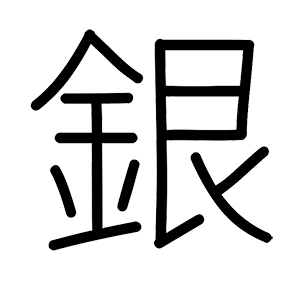An Unbranded Peony Engraved Silver Pen c. 1923-1929
by Jim Mamoulides, April 26, 2024
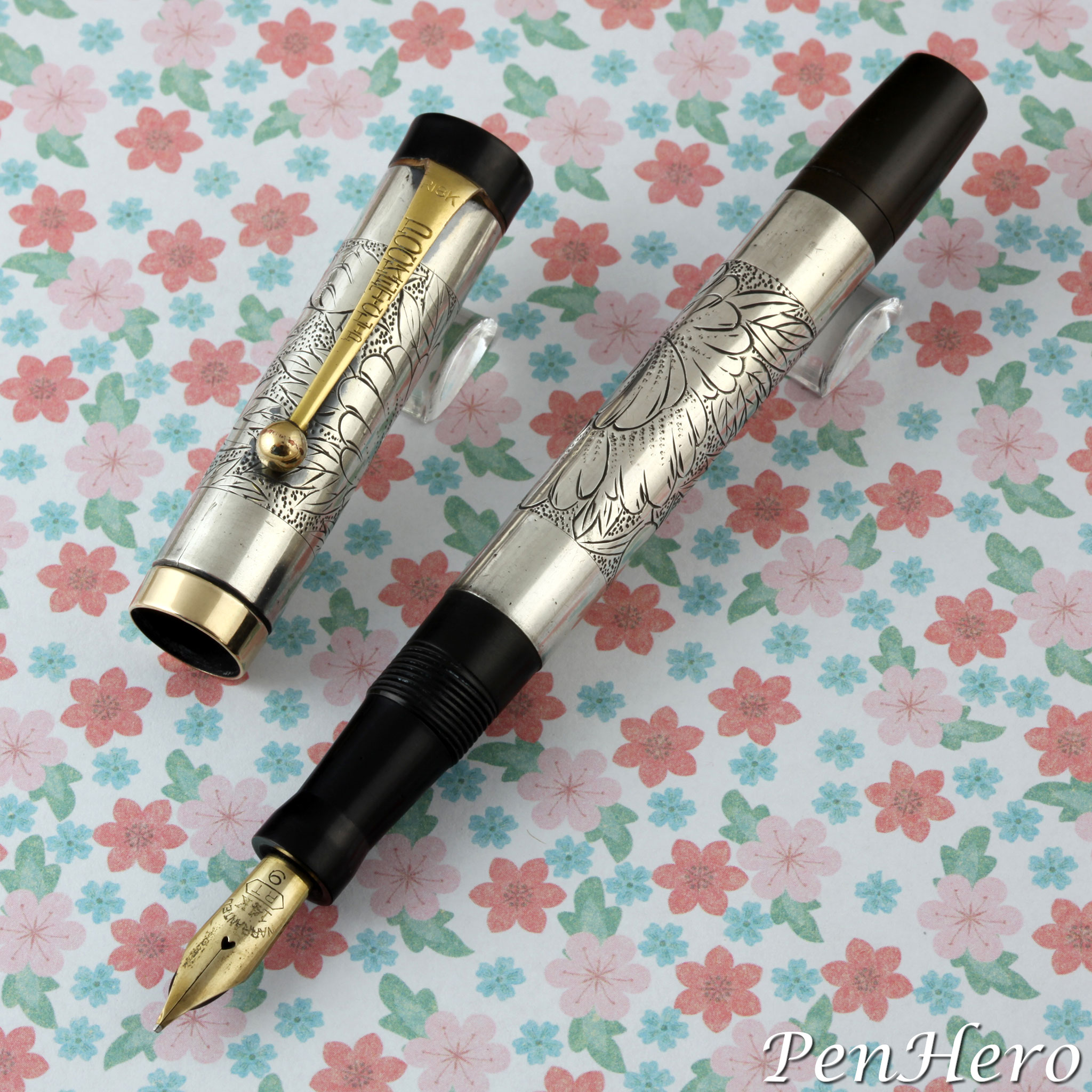 An unbranded Japanese peony engraved silver fountain pen c. 1923-1929
An unbranded Japanese peony engraved silver fountain pen c. 1923-1929
Peony Panels
This is a c. 1923-1929 silver eyedropper fountain pen with hand engraved double peony (botan 牡丹) panels. The base of the cap and the barrel are both marked SILVER. The look of the pen is obviously inspired by the Parker Jack Knife Safety with the same basic cap and barrel shape, similar washer clip, and similar hard rubber cap top and barrel end. The clip is stamped POCKET CLIP on the face and 18K for 18 karat gold plate at the top. The cap band is stamped K14 for 14 karat gold plate. The gold nib is stamped WARRANTED over 14K over RT in a hexagon over 9. It’s 5 1/16 inches long capped. It's an eyedropper filler with an ink shut off valve. The hard rubber barrel end cap is stamped with three patent numbers, 64039, 67423, and 126473.
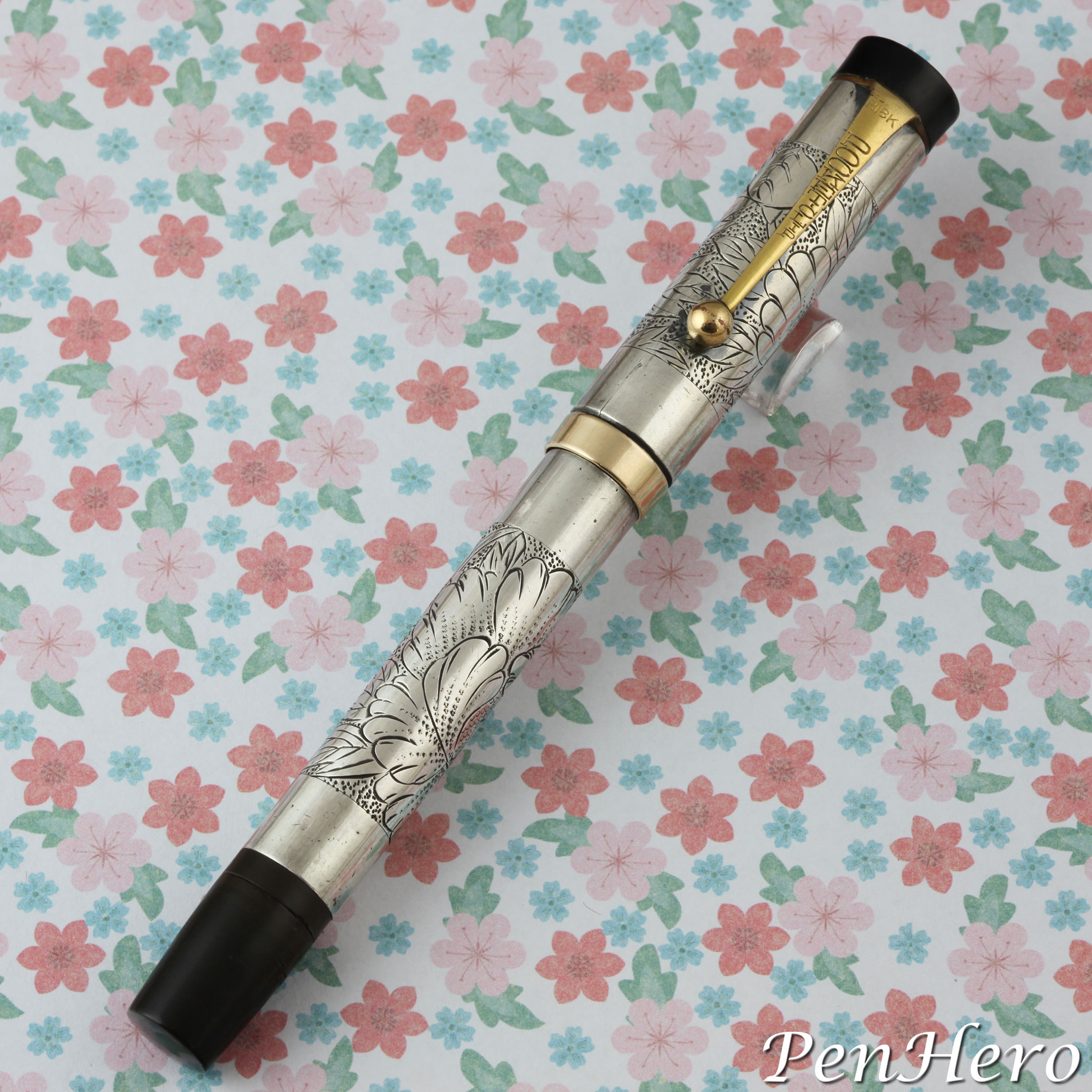 An unbranded Japanese peony engraved silver fountain pen c. 1923-1929
An unbranded Japanese peony engraved silver fountain pen c. 1923-1929
The unsigned engraving is done as two panels, one on the cap and one on the barrel, each featuring an open double peony. Peonies are a popular design in Japanese culture as they symbolize bravery, honor, courage and strength and are known as “the king of flowers” in Japan, so would be a favored design on a pen. The engraving has a factory look to it. To me it has the appearance of being hand engraved using a template or guide so it could be easily repeated. Because the two panels are not exactly the same, I don’t think the work was done by machine. This approach makes me think it was a production pen, though there are no maker’s marks to identify the company. The silver is polished to a smooth finish and the engraving is in high contrast, either from color fill or oxidation.
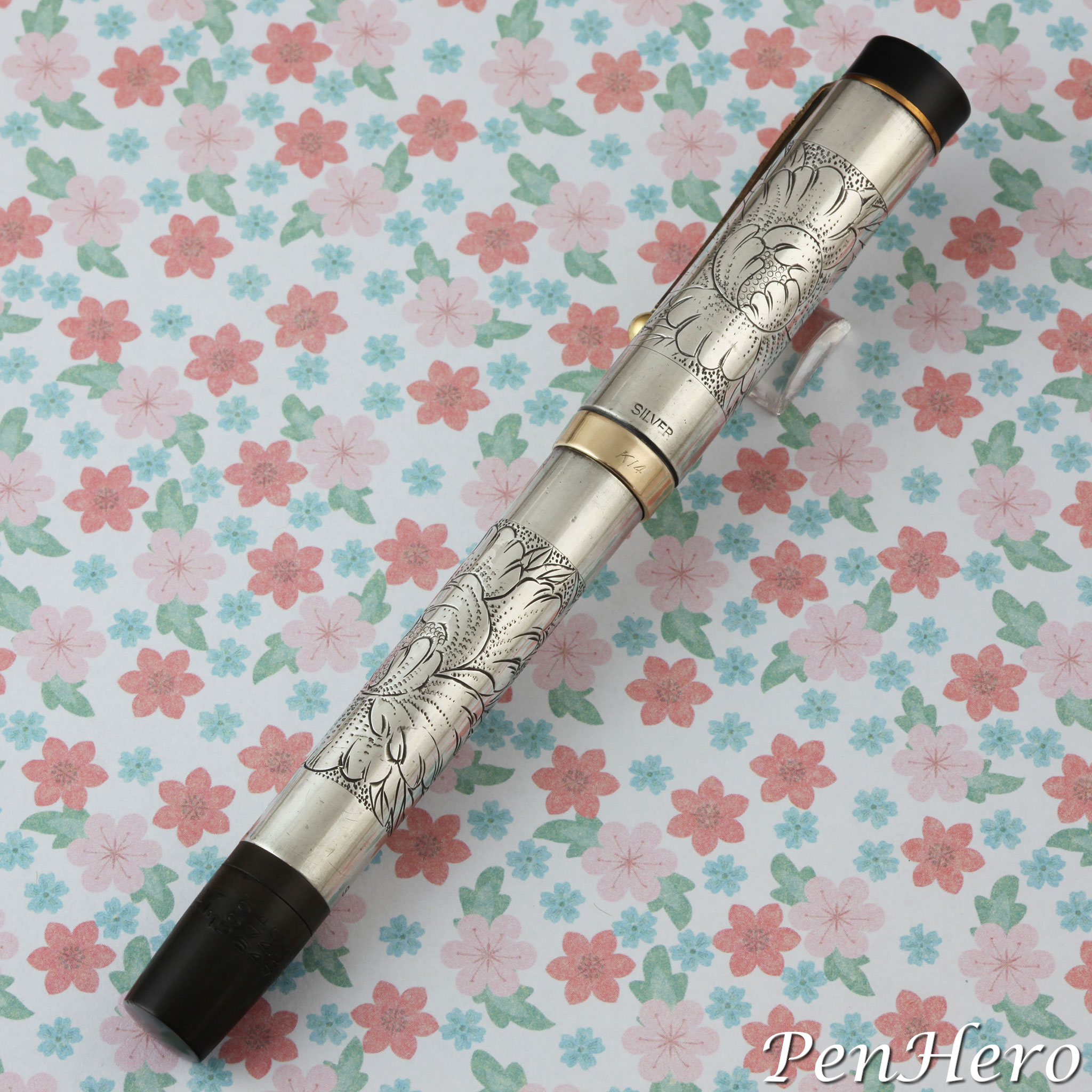 An unbranded Japanese peony engraved silver fountain pen c. 1923-1929
An unbranded Japanese peony engraved silver fountain pen c. 1923-1929
An eyedropper pen with a shut-off valve at the end of the barrel fills like any other eyedropper type, by unscrewing the nib section and dripping ink into the barrel using a bulb eyedropper. The knob at the end of the barrel is attached to a long rod that extends inside the barrel up to the base of the feed in the nib section. When the knob is screwed flush with the end of the barrel, the rod cuts off ink flow to the feed, making it an ink shut off valve. The knob must be unscrewed slightly, pulling the stopper back from the base of the feed and allowing ink to flow to the nib so the user can write.
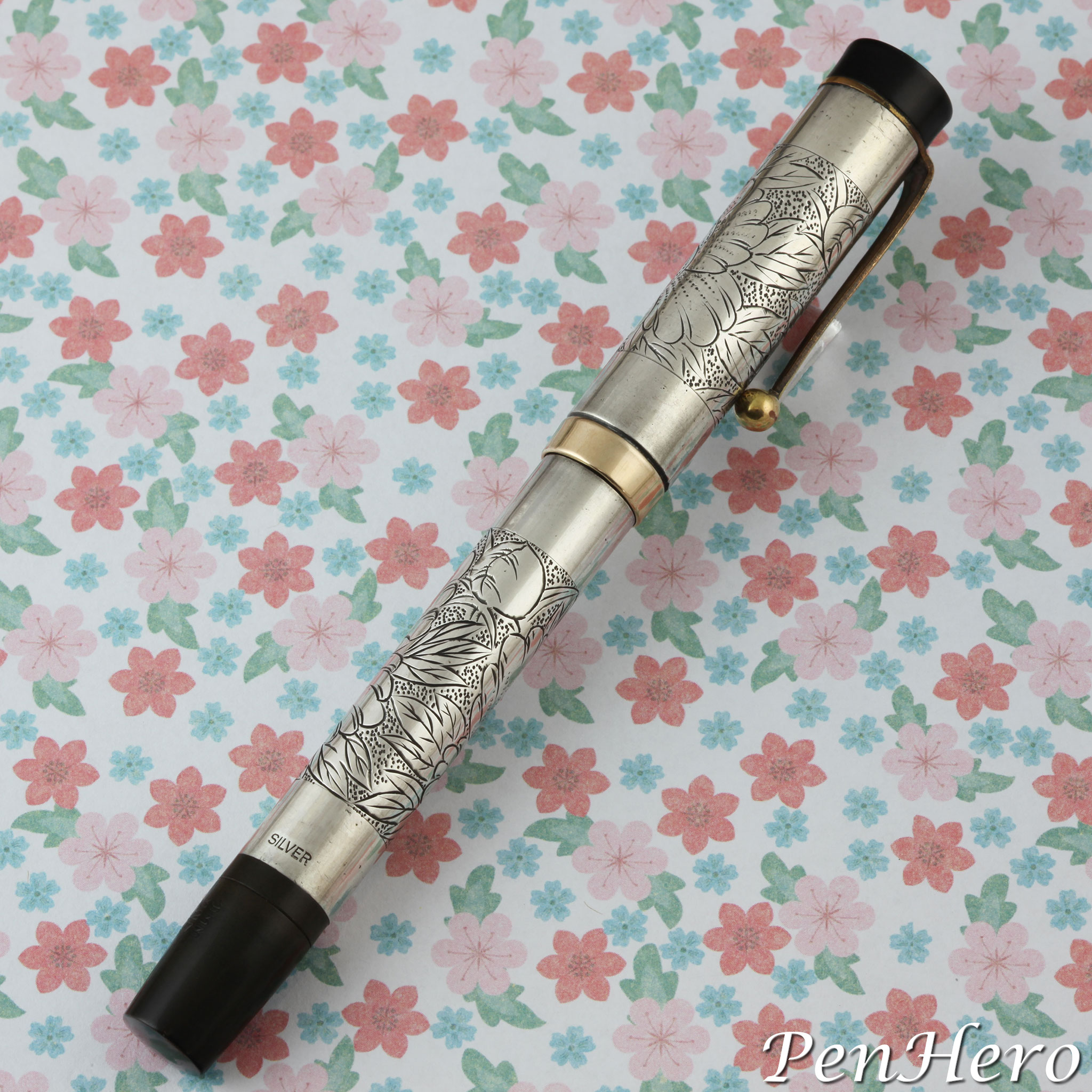 An unbranded Japanese peony engraved silver fountain pen c. 1923-1929
An unbranded Japanese peony engraved silver fountain pen c. 1923-1929
What Are The Patents About?
Using machine translations of Japanese patents is an interesting experience. To say the technical language becomes awkward and amusing is an understatement. Since I was not able to obtain good translations, and my Japanese is very limited, I waded through the output to try and figure out what the patents were about. One good result is the first two patents did appear to be related to the operation of the pen and helped shed some light on when the pen was likely made. They may also be an indication that the pen was a pen company production model rather than a one-off art piece. Here’s what I was able to decipher:
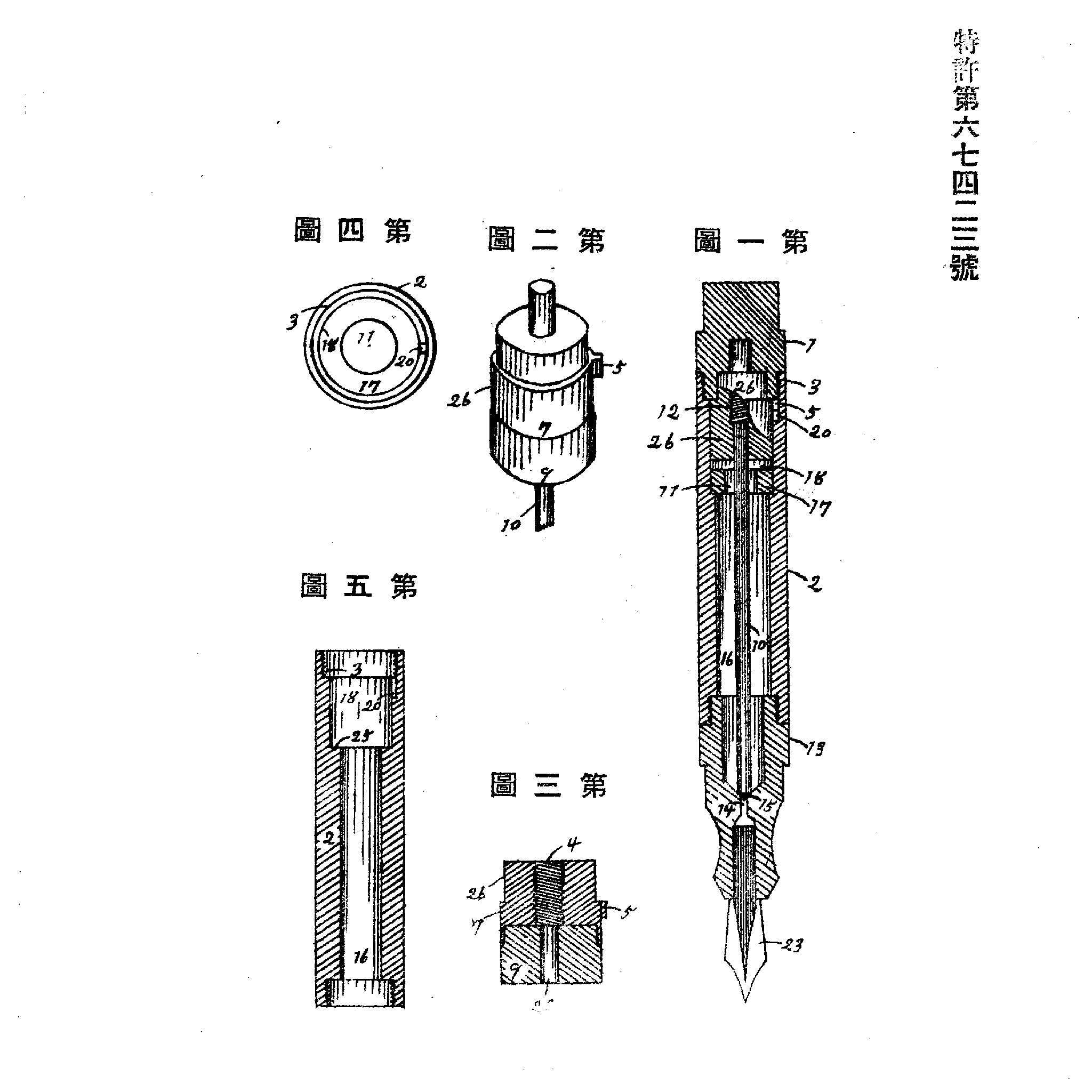 Japan Patent 64039, awarded to Kataro Nishikawa on May 27, 1923
Japan Patent 64039, awarded to Kataro Nishikawa on May 27, 1923
Patent 64039 was applied for by Kataro Nishikawa on August 9, 1920 and awarded on May 27, 1923. His address at the time of the patent was 1616, Ichikawashima-cho, Kitatoshima-gun, Tokyo, a place that does not appear on modern Google maps, so perhaps it's no longer there after a hundred years. Based on what I could understand from the machine translation and images, the patent appears to be an improvement to the operation of the ink shut off.
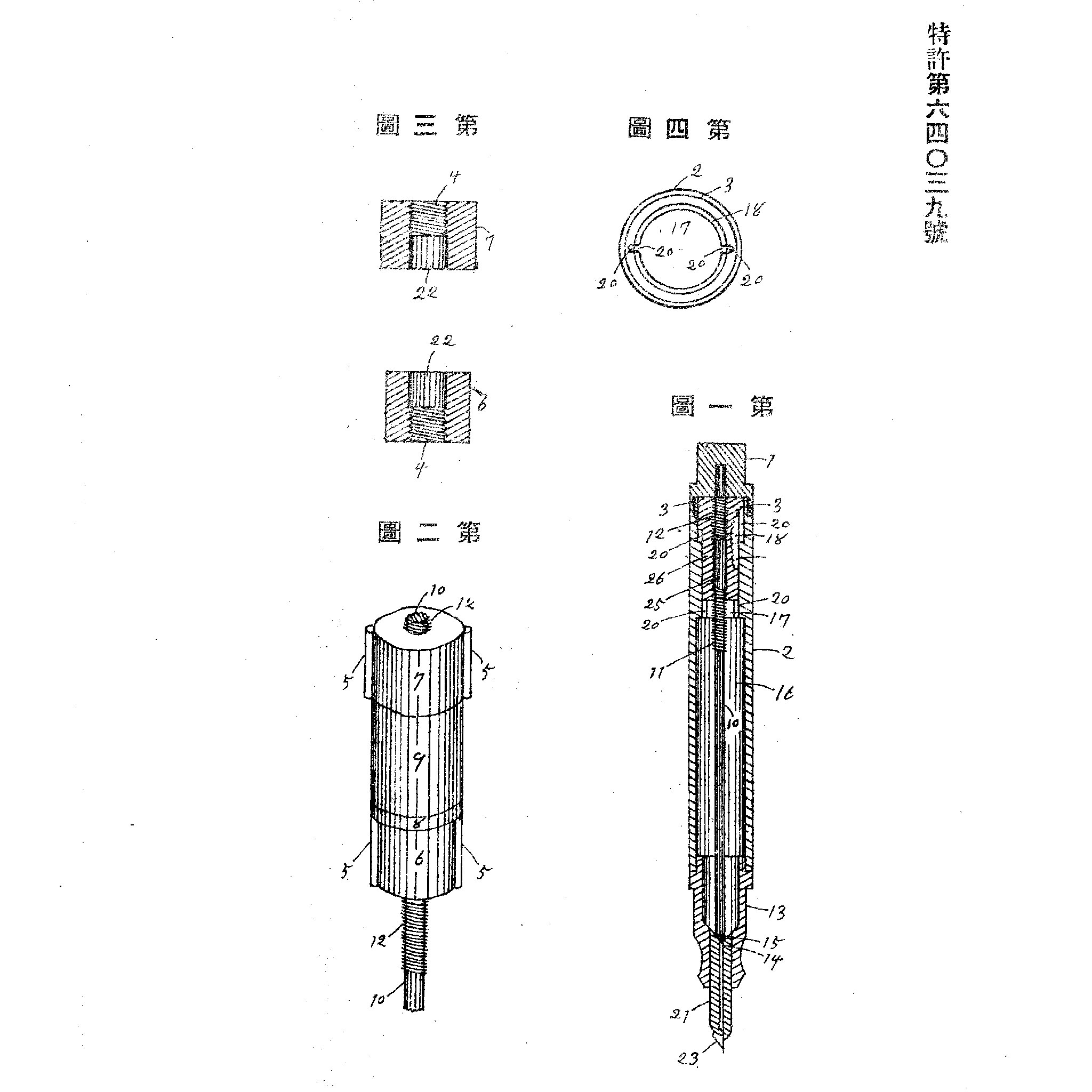 Japan Patent 67423, awarded to Yoshita Nishikawa on September 25, 1920
Japan Patent 67423, awarded to Yoshita Nishikawa on September 25, 1920
Patent 67423 was applied for by Yoshita Nishikawa on February 8, 1920 and awarded on September 25, 1920. His address at the time of the patent was also 1616, Ichikawashima-cho, Kitatoshima-gun, Tokyo. Could it be that these two patents were awarded to people from the same family? The title of the patent was “Rocking Rainbow Banner”, and the summary statement was “The ink will stop injecting for thousands of years.” I have a feeling this is an extremely literal translation, and fumbling through the description it appears to be more improvements to the operation of the ink shut off. It is described as an addition to patent 64039 above.
I looked up Japan patent 126473, the third one listed on the end cap, and it is not pen related as far as I can tell. It shows an application date of December 26, 1945 and appears to be about making thin paper tiles, so I believe it is not the droids we are looking for. That patent date of 1945 and its content clearly does not relate to this pen. I also checked the US and UK patent databases to see if it is referencing a foreign patent and came up cold there as well. Maybe it is not a patent reference or maybe it’s a patent application number. Japanese patent applications have additional text elements added so this is not something I could figure out. It must be relevant to the pen and from the same period, but I could not locate what I would think would be a correct patent for that number. Who knows?
The first two patent numbers definitely help with dating the pen, with the latest award date on patent 64039 of May 27, 1923. I’m going to mark that as the early date for production. That the pen has a patent stamping is an indication that the base pen is likely a regular production product. What the patents don't reveal is the company who made the pens. Was there a Nishikawa pen company in Tokyo that made this pen? According to Fountain Pens of Japan there was a pen maker named Noboru Nishikawa who joined the Diamond pen company in Osaka in 1957. Was this a relative of Kataro and Yoshita Nishikawa? There's just no information about this earlier company and its two or three patents.
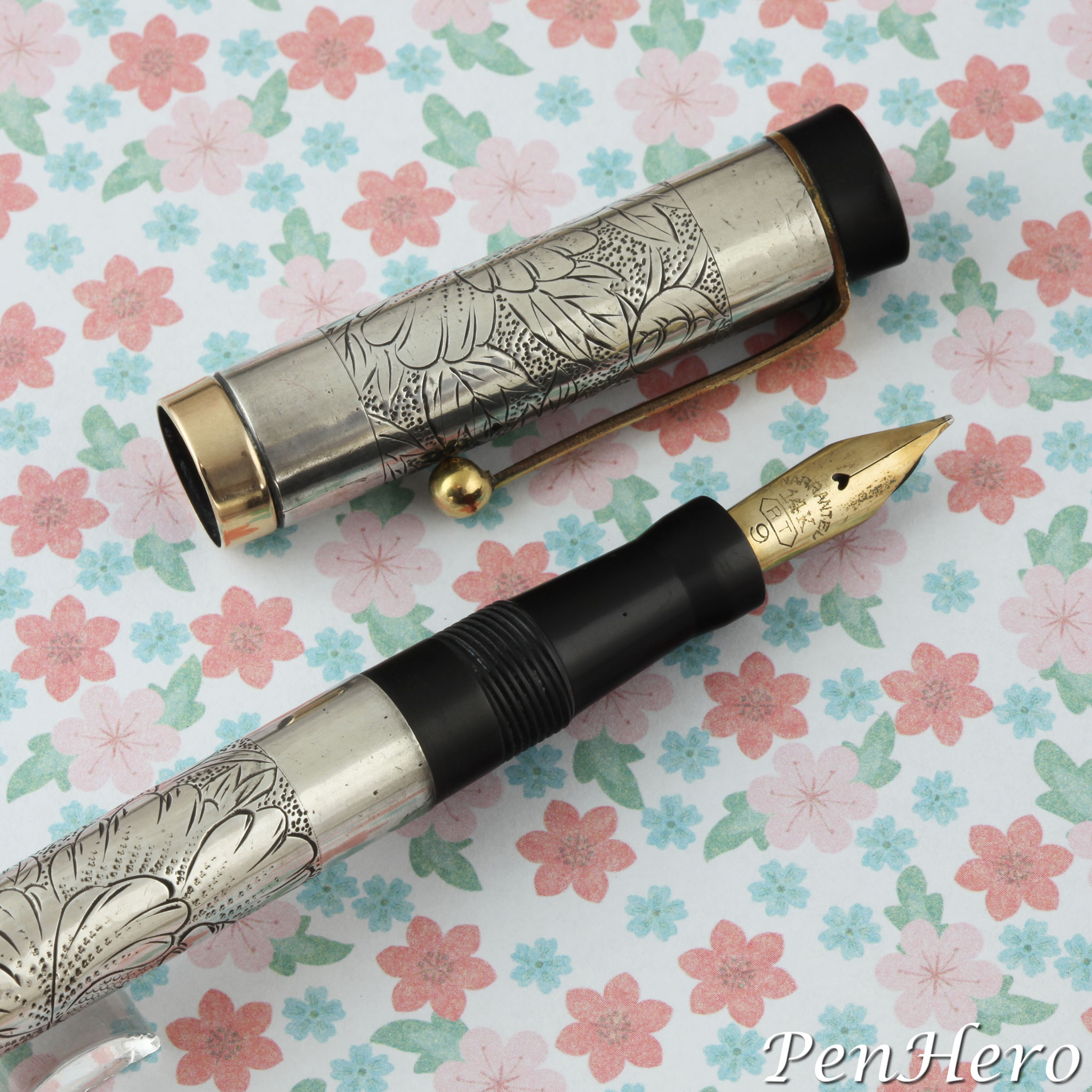 An unbranded Japanese peony engraved silver fountain pen c. 1923-1929, nib detail
An unbranded Japanese peony engraved silver fountain pen c. 1923-1929, nib detail
Because the pen was on loan, I did not ink it or write with it. It’s a very attractive pen. The fit and finish and the engraving work are quite good, and it would appeal not only to collectors who focus on early Japanese pens but also to Parker collectors who like the Jack Knife Safety and Duofold look it brings. It would be a very nice addition to a Japanese pen collection.
References
Japan Patent 64039, awarded to Kataro Nishikawa on May 27, 1923
Japan Patent 67423, awarded to Yoshita Nishikawa on September 25, 1920
Kimono with Pheasants amid Peonies, The Metropolitan Museum of Art
Interact
Comments on this article may be sent to the author, Jim Mamoulides


